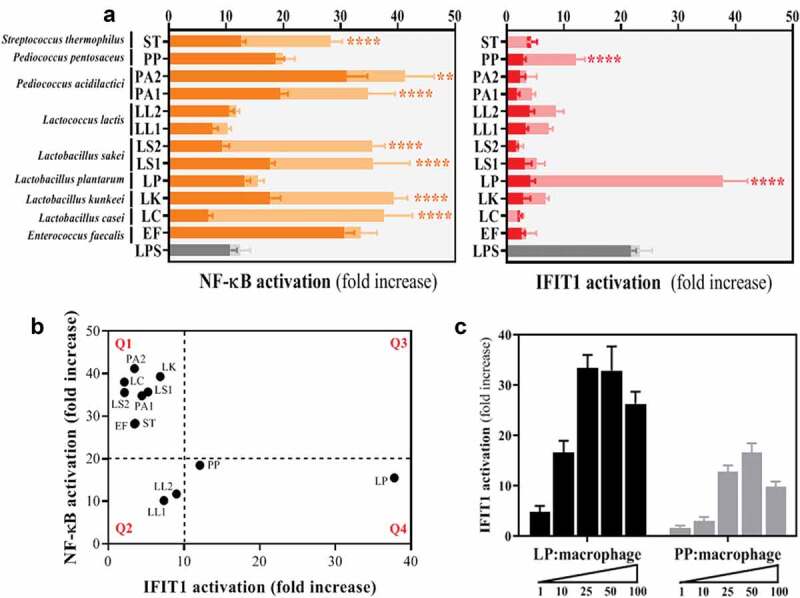Figure 1.

Analysis of 12 LAB strains reveals that viable cells of Lactobacillus plantarum (LP) and Pediococcus pentosaceus (PP) significantly induce IFIT1 activation in THP-1 macrophages in a dose-dependent manner. (a) Response of PMA-differentiated THP-1 macrophages to LAB isolates as a measurement of NF-κB (orange) and IFIT1 (red) activation. GLuc activation is presented as a fold increase over a non-stimulated condition. LAB were used at a ratio of 1 macrophage per 100 inactivated bacterial cells (dark orange and red) or 25 viable bacteria (light orange and red). LPS (gray bars) was used as a positive control in all screens. For each of the isolates, a comparative statistical analysis was carried out between inactivated and viable cells using the Student’s t-test (**p < .01; ****p < .001). (b) Correlation between NF-κB and IFIT1 activation in PMA-differentiated THP-1 macrophages exposed to LAB at a ratio of 1 macrophage per 25 viable bacteria. Activation is presented as a fold increase over a non-stimulated condition. Fold increases of 20 and 10 were selected as arbitrary thresholds for NF-κB and IFIT1 activation, respectively, to divide the graph into quadrants (Q1, Q2, Q3 and Q4). (c) IFIT1 activation in PMA-differentiated THP-1 macrophages challenged with viable cells of LP (black bars) and PP (gray bars) at increasing macrophage:bacteria ratios of 1:1, 1:10, 1:25, 1:50 and 1:100. The activation is presented as a fold increase over a non-stimulated condition.
